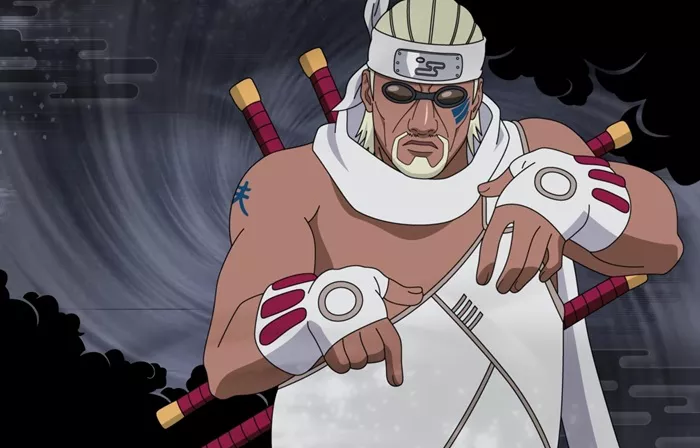Killer Bee, a charismatic and powerful character from the acclaimed anime and manga series Naruto, created by Masashi Kishimoto, stands out not only for his unique rapping style but also for his profound impact on the storyline and the thematic elements he embodies within the series. This article delves deep into Killer Bee’s origins, his role within the Naruto universe, and his cultural significance, providing a comprehensive understanding of this beloved character.
Killer Bee
Killer Bee is a fictional character in the Naruto series, known for his distinctive personality and formidable combat skills. He serves as both a comic relief and a pivotal figure in the narrative, particularly in the later parts of the series. His journey and abilities are closely tied to the lore of the ninja world in Naruto, making him a key player in the series’ exploration of themes such as discrimination, acceptance, and the quest for identity.
Who is Killer Bee?
Killer Bee is a shinobi from Kumogakure, the Village Hidden in the Clouds. He is not only a formidable ninja but also the jinchūriki of the Eight-Tails, Gyūki, which means he has a massive beast sealed inside him. This status as a jinchūriki makes him both a weapon and a pariah in his early life, themes common to all jinchūriki characters in the series.
Killer Bee’s Background and Kumogakure
Kumogakure, Killer Bee’s hometown, is one of the Five Great Shinobi Countries’ hidden villages. The village is characterized by its hidden location among the clouds on high mountain tops, which has a significant influence on its defensive strategies and cultural practices. As a village known for its strong leadership and powerful ninja, Kumogakure plays a crucial role in the world politics of the Naruto series.
Killer Bee’s Role in Naruto
Throughout the series, Killer Bee becomes a mentor and brother figure to Naruto Uzumaki, the protagonist. His influence extends beyond his immediate interactions with other characters, affecting the series’ overarching narrative and thematic depth.
Mentorship to Naruto
Killer Bee’s most significant role in Naruto is his mentorship of Naruto in controlling the power of his tailed beast, Kurama. Bee’s successful partnership with his own beast contrasts sharply with Naruto’s initial struggles, providing both a goal and a method for Naruto’s eventual success. This relationship is pivotal in Naruto’s development not just as a ninja but as a person.
Representation of Jinchūriki
As a jinchūriki, Killer Bee represents the themes of isolation and acceptance that permeate the lives of all jinchūriki in the series. His ability to overcome the loneliness and hatred directed at him and to form a true partnership with Gyūki provides a hopeful narrative for overcoming prejudice and misunderstanding.
Killer Bee’s Abilities and Battles
Killer Bee is notable not only for his personality but also for his prowess in battle, making him one of the most powerful and respected characters in the Naruto universe.
Unique Combat Style
Killer Bee’s fighting style is a blend of traditional ninja techniques and his own unique flair. He wields seven swords simultaneously using a technique called “Seven Swords Dance,” making him a formidable opponent in melee combat. Additionally, his ability to seamlessly integrate the power of the Eight-Tails into his fighting techniques makes him nearly unbeatable.
Major Battles
One of Killer Bee’s most notable battles occurs during the Fourth Great Ninja War, where he plays a crucial role in fighting against the series’ antagonist, Tobi, and the reanimated jinchūriki. His strength and resilience significantly contribute to the war’s outcome, highlighting his importance within the series.
Cultural Significance of Killer Bee
Killer Bee is not just a powerful ninja but also a cultural icon within the Naruto fandom. His love for rapping and his upbeat, positive attitude provide a stark contrast to the darker themes explored in the series.
Breaking Cultural Barriers
Killer Bee’s character breaks stereotypes commonly associated with ninja in traditional anime narratives. His rapping is more than a quirky trait; it symbolizes his individuality and his resistance to the prejudice he faces as a jinchūriki. His music offers him a way to express himself and connect with others, serving as a powerful metaphor for communication and understanding across cultural divides.
Fan Reception and Legacy
Killer Bee’s popularity among fans is immense, thanks to his humor, strength, and depth of character. He is often cited as a favorite for how he lightens the narrative while also adding to its emotional and thematic richness. His legacy is one of resilience, joy, and the power of embracing one’s true self.
Conclusion
Killer Bee from Naruto is more than just a side character; he is a complex figure who combines strength, humor, and depth to make a significant impact on the series and its viewers. His origins in Kumogakure, role as a mentor to Naruto, and status as a cultural icon make him a memorable and beloved character. Through Killer Bee, Naruto explores themes of acceptance, the strength found in diversity, and the importance of self-expression, making him a pivotal figure in the series’ success and enduring popularity.

